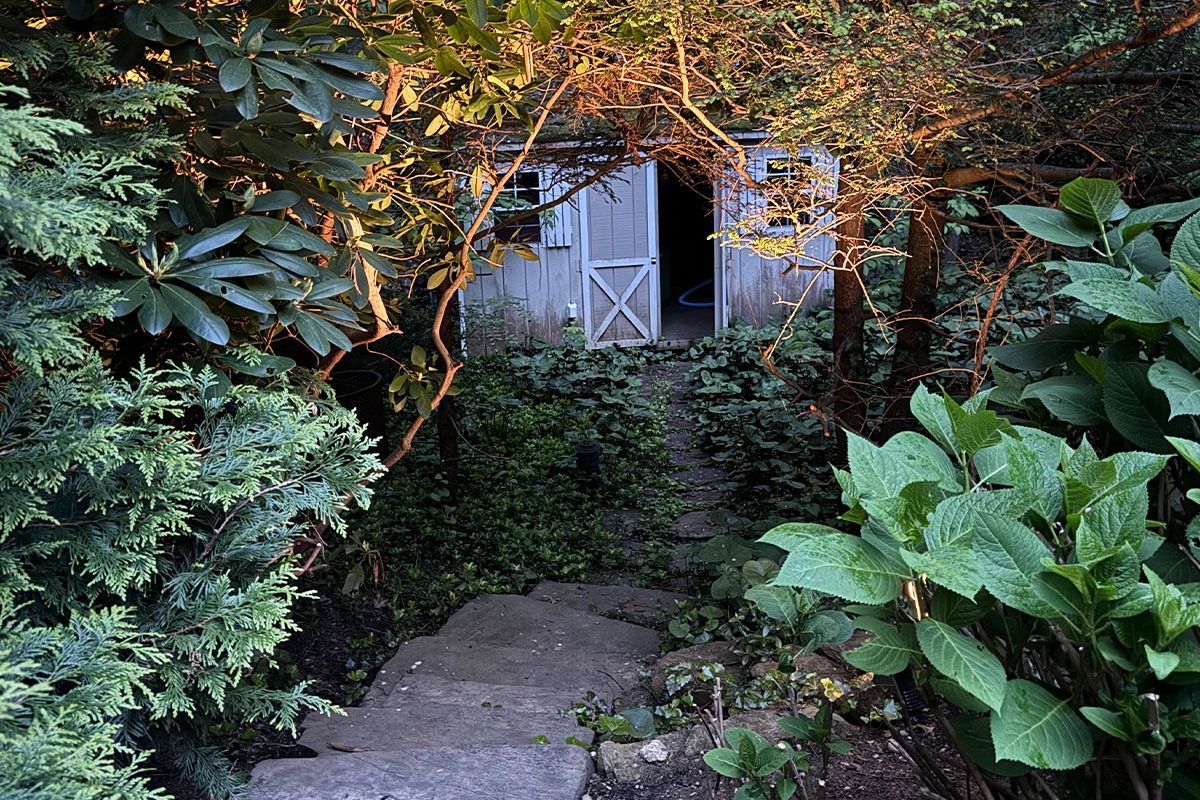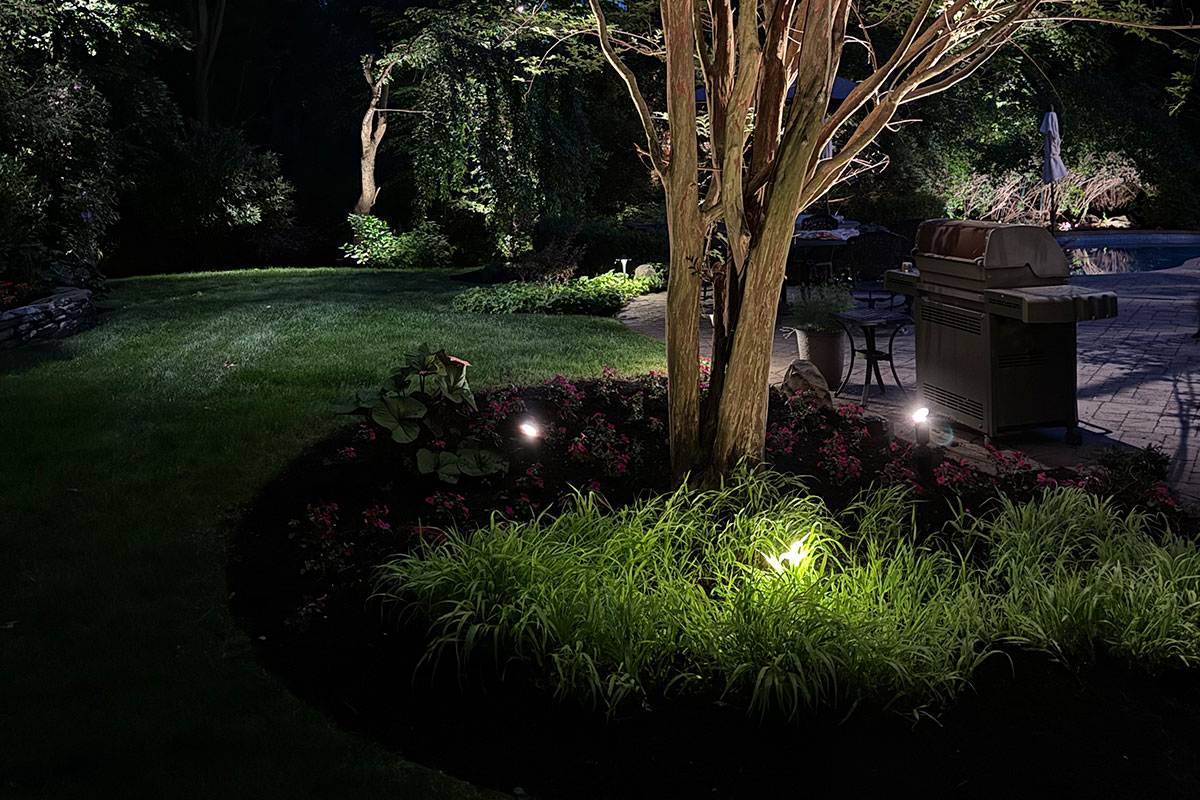Landscape lighting plays a crucial role in shaping the way you experience your outdoor spaces after sunset. Beyond simply brightening up your yard, it adds depth and dimension to your landscape design. Properly placed lights create inviting pathways, highlight architectural features, and increase security around your home. Many homeowners think about landscape lighting only as decoration, but its practical benefits often make the biggest difference in daily life. A well-lit yard extends your living space, encouraging more time outdoors for socializing or relaxing. It also helps prevent accidents by illuminating stairs, walkways, and uneven ground. A smart lighting plan balances beauty with function, making your home feel welcoming and secure.
Common Types of Landscape Lighting
Understanding the different types of landscape lighting helps you decide what fits your needs best.
- Pathway lights guide your steps safely through your garden or driveway.
- Spotlights focus on trees, sculptures, or architectural details to create eye-catching effects.
- Floodlights cover larger areas for security and general illumination, while step lights ensure staircases remain visible at night.
- Accent lighting adds subtle highlights to plants and water features.
Each lighting type contributes to a layered design that brings your yard to life after dark. Combining these options allows you to create a customized atmosphere that fits your lifestyle and the style of your home.

The Importance of Landscape Lighting Maintenance
Maintaining your landscape lighting is essential to keep it working well and looking its best. Exposure to weather elements such as rain, wind, dust, and insects can wear down fixtures and reduce performance over time. Dirt and debris can block light output, making your space less safe and less attractive. Worn-out bulbs and damaged wiring may cause flickering or complete outages, which diminish the value and enjoyment of your system. Regular upkeep not only preserves the beauty of your lighting but also helps prevent costly repairs down the line. Paying attention to maintenance ensures consistent brightness and prolongs the lifespan of your investment.
How to Maintain Your Landscape Lighting
Routine care of your landscape lighting involves a few simple but important steps. Start by inspecting your lights for any visible damage, such as cracked lenses, rust, or loose fittings. Cleaning the fixtures with a soft cloth removes dirt that can build up and reduce brightness. Be sure to turn off the power before handling any components to avoid accidents.
Checking bulbs regularly helps you spot those that need replacement. Using bulbs rated for outdoor use improves durability and prevents frequent burnout. Examine wiring for signs of wear, corrosion, or animal damage. Keeping connections tight and secure avoids flickering and power loss.
Another key part of maintenance is trimming plants that may block light beams or interfere with fixtures. Overgrown branches or shrubs can create shadows and reduce the effectiveness of your lighting design.
Finally, test timers, sensors, and control systems to ensure your lights operate on schedule. Proper timing saves energy and makes your yard look its best during the hours you use it most.

When to Seek Professional Help
Some lighting issues require professional expertise to resolve. If you experience frequent outages, inconsistent lighting, or suspect wiring problems, calling a trained technician is the safest approach. Professionals can thoroughly inspect your system, perform repairs, and make adjustments to optimize coverage.
At Nite-Lite Landscape Lighting, we also recommend upgrades that improve energy efficiency or add smart control features, such as smartphone apps or motion sensors. Scheduling seasonal maintenance visits ensures your landscape lighting stays reliable year-round without interrupting your outdoor enjoyment.
FAQS
How often should landscape lighting be maintained?
It’s best to inspect and care for your lighting system every three to six months. Regular checkups prevent many common problems and keep your yard looking bright and inviting.
What causes landscape lights to flicker or fail?
Flickering or outages usually result from burnt-out bulbs, loose wiring, moisture inside fixtures, or power supply issues. Timely maintenance typically resolves these concerns.
Can I clean my landscape lighting myself?
Yes, you can clean fixtures carefully with a soft cloth and mild soap. Always ensure the power is off before cleaning to avoid any hazards.
Are special bulbs required for outdoor lighting?
Outdoor-rated bulbs are designed to withstand weather conditions better than indoor bulbs. Using the correct bulbs helps maintain performance and extends lifespan.
When should I call a professional for lighting repairs?
Persistent flickering, dark areas, or damaged wiring indicate it’s time to call a technician. Professionals provide safe, lasting solutions.
Does landscape lighting increase home security?
Yes, by illuminating entrances, pathways, and dark spots, landscape lighting deters intruders and helps you and your family move safely around your property.
